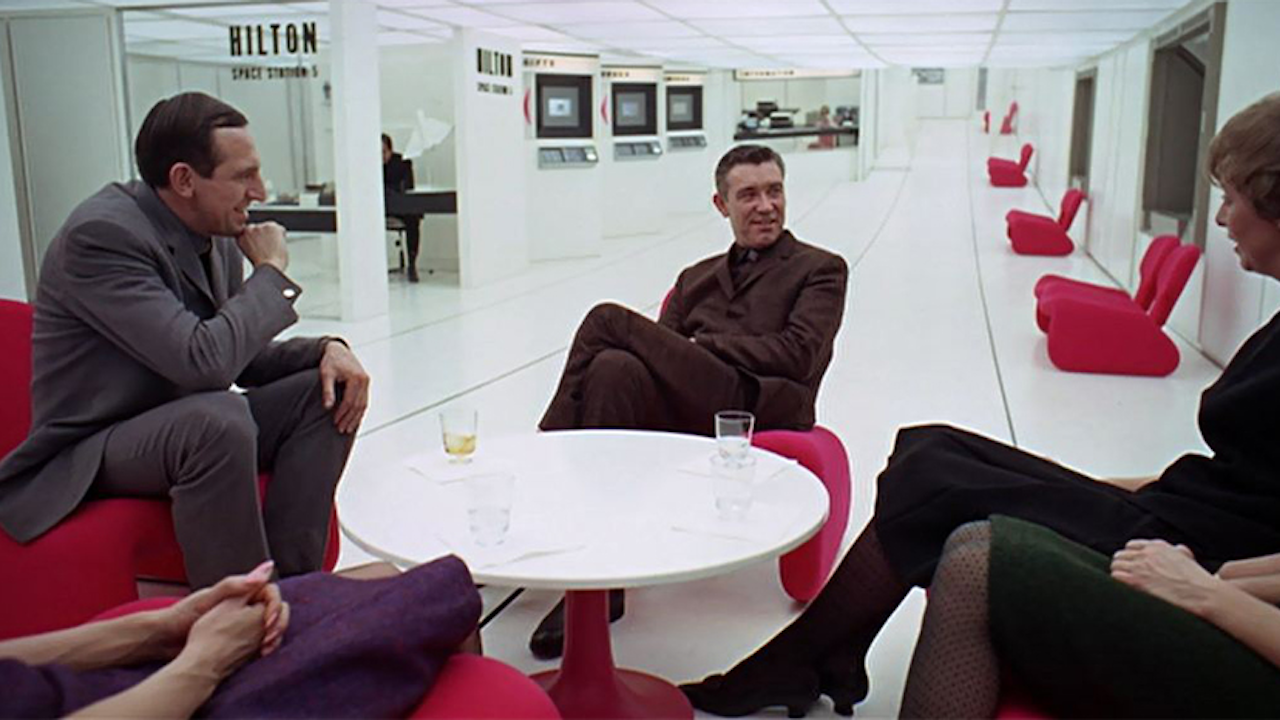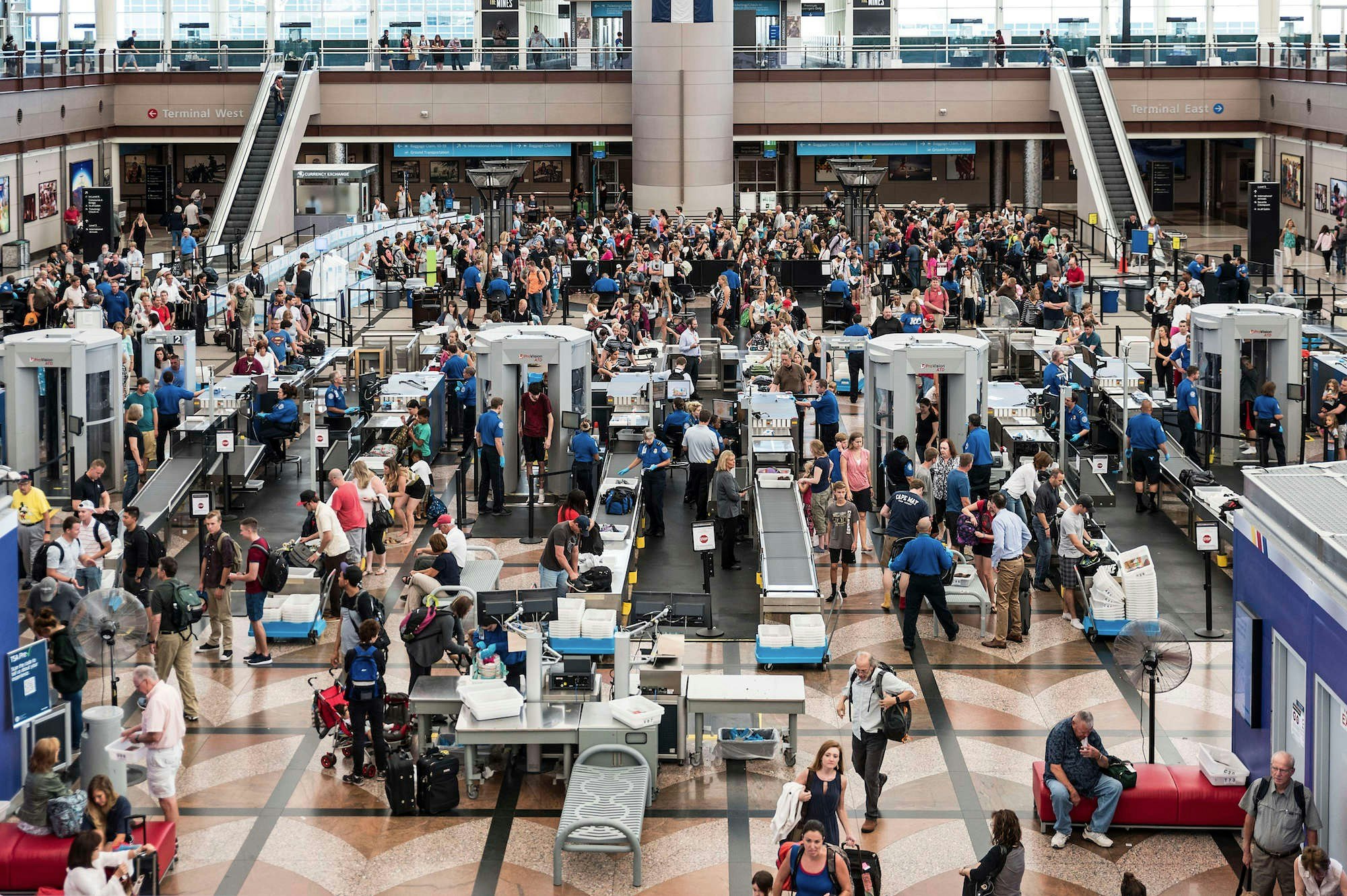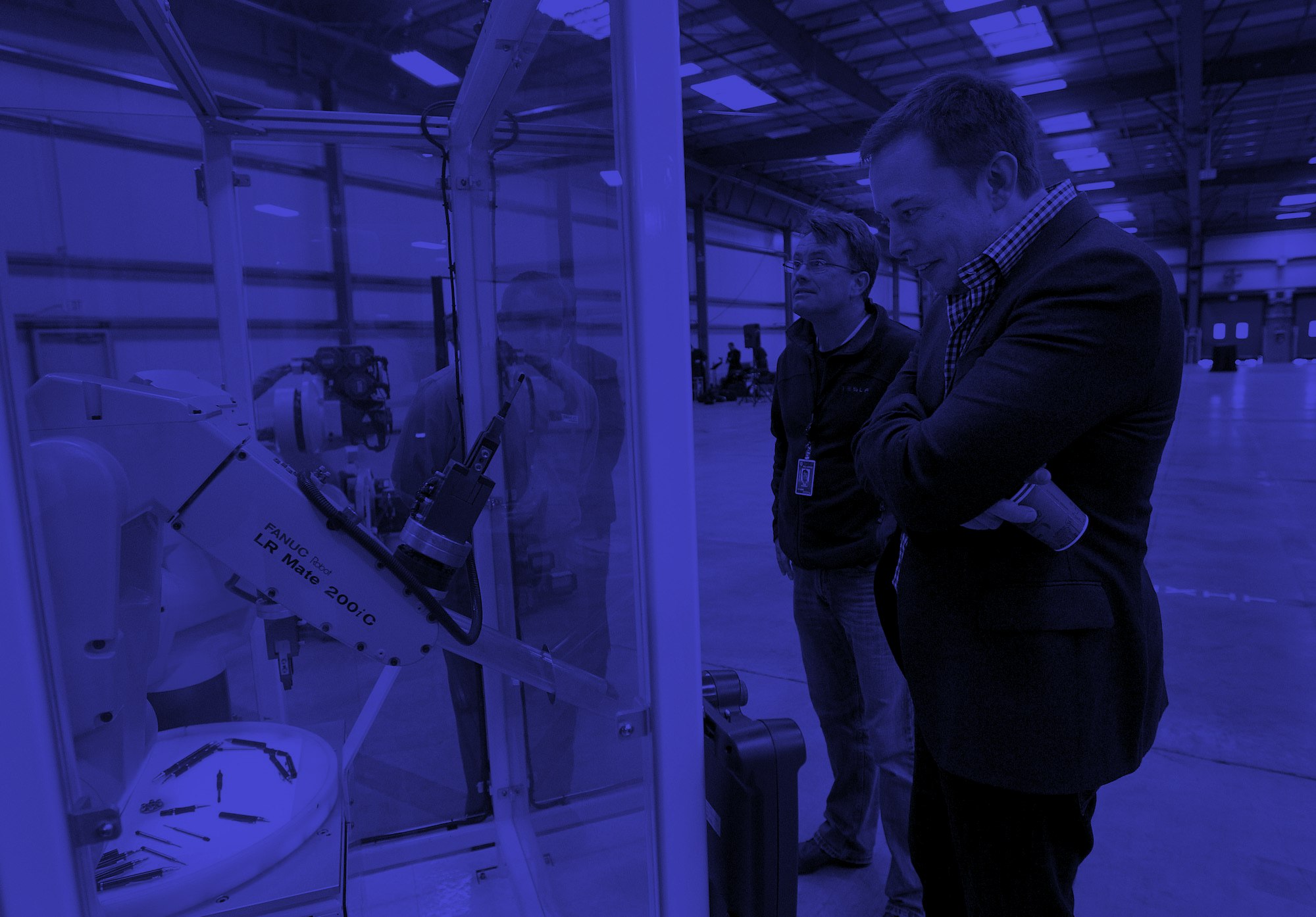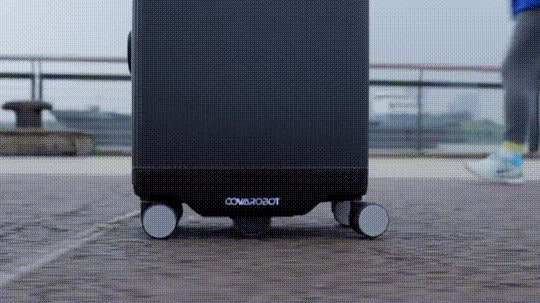The idea for a hotel in space is almost as old as the space race itself. It began at the 13th conference of the American Astronautical Society in 1967, two years before Neil Armstrong and Buzz Aldrin became the first people on the moon. The topic of the conference was “Outer Space Tourism,” and it was there that Barron Hilton, son of the hotel mogul Conrad Hilton, gave a talk about hotels in space.
“Barron Hilton had always had this fascination with flying,” Mark Young, a historian at the University of Houston, told The Outline. “He was a glider pilot and sponsored airplane races, and this all kind of dovetailed into his passion for space hotels.”
Hilton imagined the first space hotels, dubbed Orbiter Hiltons, as something like “Hilton Inns, for short trips to space,” accommodating space tourists in low Earth orbit until they continued on to the Moon and other planets.
The hotels would be modeled after a conceptual space research lab designed by Don Douglas Jr., president of the Douglas Aircraft Company, who was known for dreaming up ideas for space stations. The buildings “would be 14 stories high and could comfortably accommodate up to 24 people,” Hilton told the conference attendees. “Now that may sound like a pretty small hotel, but my father’s first hotel in Socorro, New Mexico … only had 10 rooms.”
After the orbiters were established, Hilton hoped to build a larger hotel on the Moon, using lunar soil for its construction. The entrance to the Lunar Hilton would be on the surface, but the majority of the three-level hotel would be situated 20-30 feet below for better temperature control. All the machinery necessary to keep the hotel running would be housed in the bottom level. The second level would consist of two long hallways crossing each other, providing enough space for 100 rooms. The top level would be reserved for public space and a dining room.
Each section of the hotel would be separated by air locks and lined with plastic that can expand under pressure, so that in the event of a leak, and as Hilton outlined during his presentation, the “pressurized cells can be repaired as an automobile tire is repaired here on Earth,” making “leaks that develop in the system … a nuisance, rather than a disaster.”
As a businessman through and through, Hilton realized that guests at the Lunar Hilton probably wouldn’t want to spend a lot of money cooped up in a plastic-lined air chamber. “We know that most guests are uneasy unless their accommodations are a reflection of their style of living,” he said. For that reason, “we will have none of those science-fiction cells.”
Instead, each room would have plenty of space, carpets, drapes, and plants. Their rooms would use artificial lighting that mimicked Earth’s sunlight and would include a “wall-to-wall television for programs from Earth and for views of outer space.” Moreover, the guests of the Lunar Hilton will “not dine on vitamin or nutrient capsules,” but will instead “eat just as they eat at home.” This would involve shipping dehydrated, freeze-dried steaks from Earth, which would then be reconstituted in a “nuclear-reactor kitchen.” Here, machines would do most of the cooking — a chef would “push several buttons [and] the machines will automatically remove the contents from packages, rehydrate, and heat, if necessary.”
The crown jewel of the Lunar Hilton would, of course, be its Galaxy Lounge. “If you think we are not going to have a cocktail lounge, you don’t know Hilton — or travelers,” Hilton quipped. In the Galaxy Lounge, lunar tourists would be able to “enjoy a martini and see the stars!” Although the lounge would be underground, the guests would enjoy a view of Earth and outer space through “thermopane windows.” All cocktails would be prepared by a robotic wait staff, which would only need to drop a tablet into a glass of pure ethyl alcohol and water and voila: an instant martini, Manhattan, or gin.
While Hilton’s plans for lunar hotels may seem a little ambitious by today’s standards, he was, by all accounts, very serious about trying to make them a reality. “I firmly believe that we are going to have Hiltons in outer space,” he told the American Astronautical Society. “Perhaps even soon enough for me to officiate at the formal opening of the first. But if fate won’t cooperate with me, you can bet your last dollar that one of my sons will be a part of the Hilton Hotel System in outer space.” It seems that others also took Hilton seriously, as evidenced by Hilton’s reference to an East Coast travel agent who was taking $10 down payments on reservations for the Lunar Hilton in the mid-’60s.
Immediately following Hilton’s presentation, the German rocket engineer Krafft Ehricke took the stage and outlined his own plan for an orbital space hotel, which he had taken to calling the Astropolis. Unlike Hilton’s design, Ehricke’s space hotel would be rotating to produce artificial gravity. Some areas of the hotel would be rotating at different speeds than others, allowing for different gravity environments that would mimic the feeling of being on the Moon or Mars, for example. According to Ehricke, the Astropolis could host 1,100 guests at a time, but due to the transportation and maintenance costs, the hotel would only turn a profit of about $5 per guest, per day. Ehricke’s calculations were based on the assumption that launch costs would one day drop to about $70 per pound, thanks to the advent of reusable launch vehicles and improved rocket fuels. Today, it still costs at least $9,000 per pound of stuff launched into space.
Unfortunately, despite Hilton and Ehricke’s unflagging optimism, their ambitious plans for space hotels never really got much beyond a few crude drawings and a handful of promotional materials, like a hotel key and a mock-up for reservation request cards at the Lunar Hilton. The closest realization of Hilton’s dreams would occur the year after his presentation, when a Hilton Space Station was featured in Stanley Kubrick’s 2001: A Space Odyssey.
Barron Hilton’s idea made a brief resurgence in the late ’90s, when the Japanese architecture firm Shimzu also drafted up plans for an orbital space hotel, which would be equipped with 64 guest rooms. The hotel would consist of a rotating ring about 400 feet in diameter, which would create an artificial gravity just slightly less than gravity on Earth, so “tour participants can feel comfortable and relaxed in the guest rooms.”
“I firmly believe that we are going to have Hiltons in outer space.”
While it would be easy to dismiss these mock-ups for space hotels as little more than a publicity stunt, a number of aerospace companies are seriously considering the idea. These new generation plans for space hotels go by the name of commercial space stations and are far more realistic than their 20th-century predecessors due to the rise of private companies like Virgin Galactic and SpaceX.
One of the more recent plans for a space hotel was floated by the Russian aerospace company Orbital Technologies and unveiled in 2011. The Russian commercial space station would orbit at 250 miles above Earth and host a maximum of seven people at a time for stays ranging from three days to six months. Food would be shipped up to the space station in small amounts of dehydrated rations, but unlike the Orbital Hiltons, alcohol would be banned on board. The plan was to make the space station ready to start hosting guests by 2016, but now that the year has come and gone, it appears the Russian commercial space station has gone the way of the Lunar Hilton. Orbital Technologies could not be reached to comment on the fate of its space hotel.
Fortunately, all hope is not lost for space hotels thanks to another hospitality tycoon: Robert Bigelow, owner of the Budget Suites of America hotel chain. According to the notoriously reclusive Bigelow, he got into the hotel business to fund his plans for commercial space destinations.
In 1999, he founded Bigelow Aerospace, and within five years, the company had launched its first inflatable module into orbit. In the last decades, Bigelow has had a second successful orbital launch of its inflatable habitat, outlined plans for an inflatable moon base, and ultimately scored a $17 million contract with NASA to bring one of its inflatable modules to the International Space Station. Last year, Bigelow launched its Bigelow Expandable Activity Module (BEAM) to the ISS on board a SpaceX rocket, attached to the space station and successfully inflated for testing.
According to a recent interview with Bigelow in Fortune, following the successful deployment of BEAM, he wants to deploy two more inflatable habitats by 2020. Each habitat will be about 330 cubic meters in size (equivalent to one module on the ISS) and can be used by up to three people. It will cost about $60 million per person, per year to use, but this is relatively cheap considering a seat on a Soyuz rocket to the ISS runs about $80 million. So far, the main impediments to Bigelow’s dreams of building a hotel empire in orbit are transportation logistics — but as companies like SpaceX continue to push launch costs ever lower, Bigelow thinks this could cease to be a barrier to commercial space travel as soon as 2018.
Although Bigelow’s plans for space hotels are by far the most advanced and realistic, his orbital hotels may have some competition. Early in January, a new aerospace company called Axiom unveiled its plans for its own commercial space station. The plan is to use the station for everything from space tourism to astronaut missions on behalf of countries that have yet to put anyone into orbit. It will include a lab space, as well as machines that will be capable of manufacturing everything from “exotic fiber optics” to small satellites.
According to Axiom’s website, training for trips to the space station will begin this year, with missions commencing as early as 2019. This is ambitious, but the CEO of Axiom is none other than Michael Suffredini, the manager of the International Space Station for 10 years at NASA. The plan is to attach the first Axiom module to the ISS in 2020 and continue to build the Axiom space station from the ISS. By the time the ISS is decommissioned in 2024, Axiom hopes to be ready to go it alone as the first commercial space station in orbit.
This is an exciting prospect. But if the 50-year history of space hotels has taught us anything, it is to be skeptical of grandiose plans for the future of space tourism. In 1967, Barron Hilton thought the advent of space tourism was so close that he would be cutting the ribbon on his own lunar hotel. Fifty years later, however, only seven tourists have been to the ISS, a commercial initiative that died with the space shuttle program.
If the 50-year history of space hotels has taught us anything, it is to be skeptical of grandiose plans for the future of space tourism.
Some space hoteliers are more than happy to take your money now, however. The Spanish space hotel company Galactic Suites announced its plans for a space hotel in 2007. It began accepting reservations in 2009 for a promised launch in 2012. The company collected $4.4 million for a plan that never materialized.
The private space industry is flourishing, and space tourism is not as implausible as it seemed in 1967 or even 2009. But private flights to space still present a number of technical and economic difficulties (the last tourist in space in 2009 paid $30 million for the opportunity), to say nothing of the technical and economic challenges of building a private space station. So even if you do have a few million dollars burning a hole in your pocket, it’s probably best to wait until the hotels begin construction before making a reservation.














